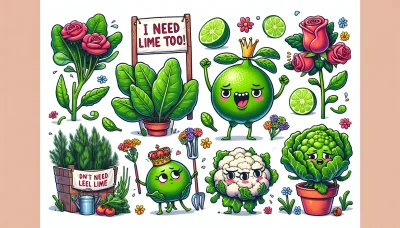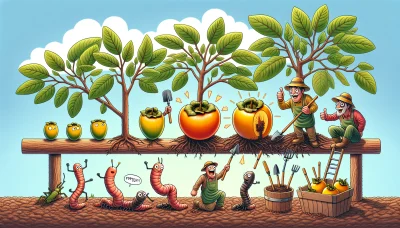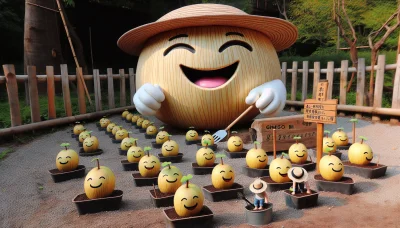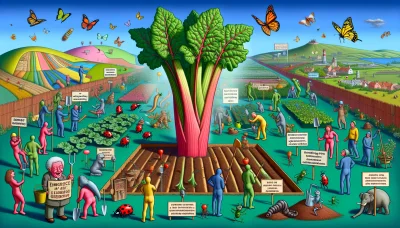Percinnamon Quiz
Test Your Knowledge
Question of
Understanding Percinnamon: An Introduction
Percinnamon is a concept that, while not widely recognized in mainstream gardening literature, plays a crucial role in the cultivation and nurturing of plants, particularly in environments that require a nuanced understanding of soil chemistry and plant nutrition. Originating from a blend of traditional practices and modern scientific research, percinnamon emphasizes the balance of minerals and organic matter in the soil, aiming to optimize plant health and productivity. Its significance in gardening cannot be overstated, as it directly influences the ability of plants to absorb nutrients, resist pests and diseases, and thrive in various climatic conditions. By applying the principles of percinnamon, gardeners and farmers can significantly improve the quality and yield of their crops, making it a valuable knowledge area for anyone serious about plant cultivation.
The Ideal Growing Conditions for Percinnamon
- Sunlight: Percinnamon plants thrive in full sun, requiring at least 6 to 8 hours of direct sunlight daily.
- Soil Type: Well-draining, fertile soil with a pH between 6.0 and 7.0 is ideal for percinnamon growth.
- Water Requirements: These plants need consistent moisture, especially during dry spells. However, overwatering should be avoided to prevent root rot.
- Temperature Preferences: Percinnamon prefers warm temperatures, flourishing in environments that maintain a temperature range of 60°F to 75°F (15°C to 24°C).
Planting Your Percinnamon: A Step-by-Step Guide
Planting percinnamon can be a rewarding experience with the right approach. Follow these steps to ensure your percinnamon plants thrive from seed to sprout.
- Start by selecting high-quality percinnamon seeds from a reputable source to ensure the best germination rates.
- Prepare a seed starting mix by combining equal parts peat, perlite, and vermiculite to ensure good drainage and aeration.
- Soak the seeds in water for 24 hours prior to planting to help break down the seed's outer layer and promote germination.
- Sow the seeds in the prepared starting mix, placing them at a depth of about twice the size of the seed.
- Cover the seeds lightly with soil and gently water them, making sure the soil is moist but not waterlogged.
- Place the seed containers in a warm, bright area but out of direct sunlight until the seeds germinate.
- Keep the soil consistently moist by misting the surface with water as needed.
- Once the seedlings have emerged and have grown their first set of true leaves, transplant them into individual pots filled with a rich, organic potting mix.
- Gradually acclimate the seedlings to outdoor conditions over the course of a week to prepare them for planting in their final location.
- Choose a sunny spot in your garden with well-draining soil and plant the percinnamon seedlings, spacing them about 12 inches apart to allow for growth.
- Water the newly planted percinnamon regularly, keeping the soil consistently moist but not soggy, to help establish their root system.
Caring for Your Percinnamon Plants
Percinnamon plants are a delightful addition to any garden, known for their vibrant colors and unique aroma. To ensure your percinnamon plants thrive, it's important to follow some basic care guidelines. Watering should be done regularly, keeping the soil moist but not waterlogged, as overwatering can lead to root rot. Fertilizing your percinnamon plants every four to six weeks during the growing season will help promote healthy growth and vibrant blooms. Use a balanced, all-purpose fertilizer for best results. Pruning is also essential for maintaining the shape of your plants and encouraging new growth. Remove any dead or dying foliage and trim back overgrown areas in the early spring to prepare your plant for the growing season. With the right care, your percinnamon plants will be a stunning addition to your garden for years to come.
Pest and Disease Management for Percinnamon
Percinnamon, a highly valued plant known for its aromatic qualities and culinary uses, is susceptible to various pests and diseases. Effective management of these challenges is crucial for the health and productivity of percinnamon. Below are some of the most common pests and diseases that affect percinnamon, along with strategies for their management.
- Aphids: Small, sap-sucking insects that can cause leaf curling and stunted growth. Management includes the use of insecticidal soaps or neem oil applications to infested areas.
- Spider Mites: Tiny pests that can cause leaf discoloration and drop. Increasing humidity and applying miticides can help control their population.
- Fungal Diseases: Such as root rot and powdery mildew, which thrive in wet conditions. Improve soil drainage, reduce overhead watering, and apply fungicides when necessary.
- Snails and Slugs: These pests feed on young leaves and stems. Use of baits, traps, and barriers can help protect percinnamon plants from damage.
Harvesting and Using Percinnamon
The best time to harvest percinnamon is in the early morning hours when the dew has settled on the leaves, typically during the late summer months when the plant is at its peak of maturity. The ideal method for harvesting involves gently cutting the stems with a sharp knife or scissors, ensuring not to damage the plant's base. For medicinal uses, it's crucial to harvest the leaves before the plant flowers for the highest potency.
- In cooking, percinnamon leaves can be used fresh or dried to add a unique flavor to soups, stews, and sauces.
- Medicinally, percinnamon can be brewed into a tea to help with digestion issues and to reduce inflammation.
- As an ornamental plant, percinnamon can be grown in gardens for its attractive foliage and pleasant aroma, adding a touch of greenery and fragrance.
Frequently Asked Questions About Percinnamon
| Question | Answer |
|---|---|
| How fast does percinnamon grow? | Percinnamon typically reaches maturity within 90 to 120 days after planting, depending on the variety and growing conditions. |
| What plants are compatible with percinnamon in a garden? | Percinnamon pairs well with legumes, such as beans and peas, which help fix nitrogen in the soil, benefiting its growth. It's advisable to avoid planting percinnamon near fennel or cilantro as they can inhibit each other's growth. |
| Can percinnamon be grown organically? | Yes, percinnamon can be grown organically. Use compost and organic fertilizers for nutrients, and employ natural pest control methods like neem oil or insecticidal soap to manage pests. |












